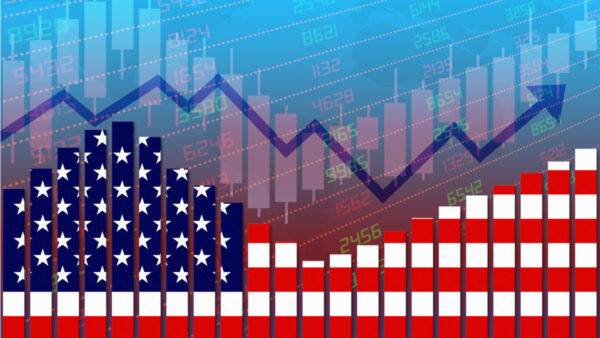In recent times, the topic of inflation has gained significant attention, particularly in the context of the United States. As the world’s largest economy, changes in U.S. inflation rates can have far-reaching consequences, affecting everything from consumer purchasing power to global financial stability. rajkotupdates.news: Us inflation jumped 7.5 in in 40 years In this article, we will delve into the significant increase in U.S. inflation rates over the past 40 years, examining its causes, impacts, and potential future implications.
Understanding Inflation: A Brief Overview
Inflation refers to the general increase in prices of goods and services within an economy over a certain period. This decrease in purchasing power can have wide-ranging consequences for individuals, businesses, and governments alike. To comprehend the surge in U.S. inflation rates over the last 40 years, we must first analyze the historical inflation trend in the country.
The Historical Inflation Trend in the U.S.
Over the past four decades, the U.S. has witnessed fluctuating levels of inflation. From the 1980s onwards, inflation rates began to decline, largely due to prudent fiscal policies and controlled money supply. However, the early 2000s brought a shift as inflation rates experienced an upward trajectory, signaling the onset of a complex and evolving trend.
Factors Driving Inflation: Demand and Supply Dynamics
Multiple factors contribute to fluctuations in inflation rates. One major influence is the interplay between supply and demand. When demand for goods and services surpasses their supply, prices tend to rise, contributing to inflation. Similarly, disruptions in supply chains, such as those caused by geopolitical events or natural disasters, can lead to sudden inflationary spikes.
Role of Monetary Policy in Controlling Inflation
Central banks, like the U.S. Federal Reserve, play a crucial role in managing inflation. By adjusting interest rates and employing various monetary tools, central banks aim to maintain stable price levels. Striking the right balance between economic growth and curbing inflation remains a continuous challenge.
Impact on Consumer Purchasing Power
Inflation’s direct consequence is the erosion of consumer purchasing power. As prices climb, the same amount of money buys fewer goods and services. This can strain household budgets, particularly for essential items like food, housing, and healthcare.
Real Estate and Investment Considerations
Inflation’s impact extends to investments and real estate. While inflation can lead to increased property values, it can also result in higher construction and borrowing costs. Investors must navigate this landscape carefully to preserve and grow their wealth effectively.
The Global Perspective: U.S. Inflation’s Ripple Effects
The interconnectedness of the global economy means that U.S. inflation rates have far-reaching implications. As the U.S. dollar plays a central role in international trade, changes in its value can affect exchange rates, trade balances, and commodity prices across the world.
Inflation’s Relationship with Unemployment
A common economic theory suggests an inverse relationship between inflation and unemployment, known as the Phillips curve. However, this relationship has become more complex in recent years, challenging traditional economic models.
Challenges Faced by Central Banks
Central banks face the intricate task of anticipating and responding to inflation. Balancing the need for economic growth with price stability requires careful analysis and decision-making.
The Debate Over Measuring Inflation Accurately
Measuring inflation accurately is a topic of debate. Traditional indices like the Consumer Price Index (CPI) might not fully capture the impact of technological advancements and changing consumption patterns.
Inflation’s Political and Social Ramifications
Inflation’s societal impacts are multifaceted. High inflation can lead to public discontent and influence political landscapes. Additionally, fixed-income earners and vulnerable populations are disproportionately affected.
Adapting Financial Strategies to Inflation
Individuals and businesses must adjust their financial strategies to mitigate inflation’s effects. This includes diversifying investments, considering inflation-protected securities, and maintaining a flexible budget.
Historical Precedents: Learning from the Past
History provides valuable lessons on how societies have coped with inflation. By studying past strategies and their outcomes, policymakers can make more informed decisions.
Future Outlook: Predictions and Uncertainties
The future trajectory of U.S. inflation rates remains uncertain. Factors such as technological advancements, global economic dynamics, and unforeseen events will all contribute to shaping the inflation landscape.
Conclusion: Navigating the Complexities of Inflation
Inflation is a multifaceted phenomenon that demands attention and strategic planning. As we navigate through uncertain economic times, understanding the causes, impacts, and potential future trends of inflation is crucial for individuals, businesses, and policymakers.
FAQs About US Inflation
- What exactly is inflation?
Inflation refers to the sustained increase in the general price level of goods and services in an economy.
- How does inflation impact my daily life?
Inflation erodes the purchasing power of money, meaning that the same amount of money buys fewer goods and services over time.
- Can inflation be beneficial for the economy?
Moderate inflation can encourage spending and investment. However, high inflation can lead to economic instability.
- How does the Federal Reserve control inflation?
The Federal Reserve uses tools like adjusting interest rates and implementing monetary policies to control the money supply and influence inflation.
- Are there historical examples of countries overcoming hyperinflation?
Yes, countries like Germany and Zimbabwe have experienced hyperinflation and later stabilized their economies through concerted efforts and policy reforms.

